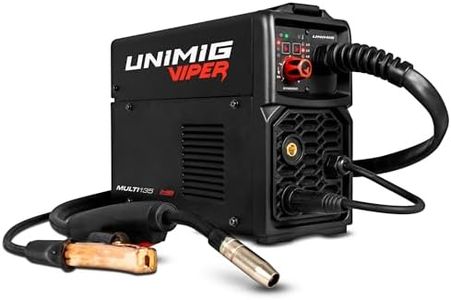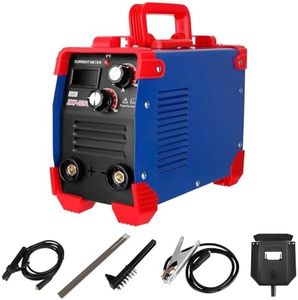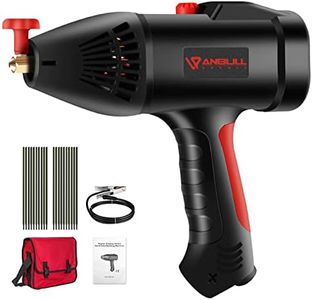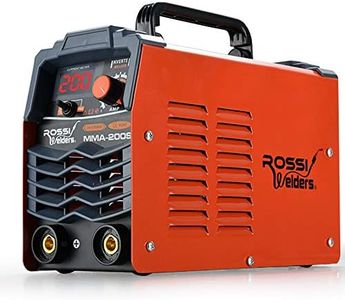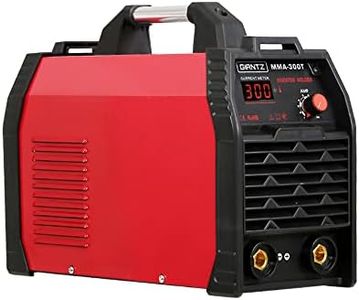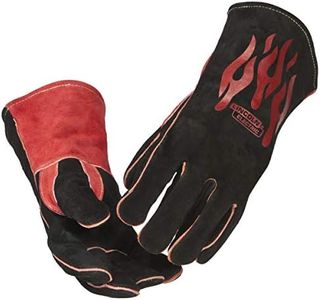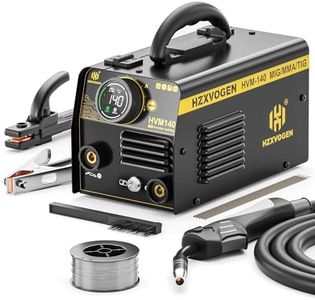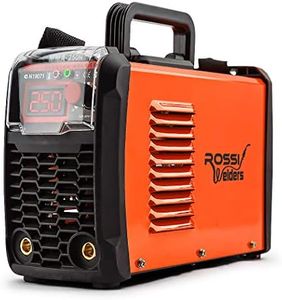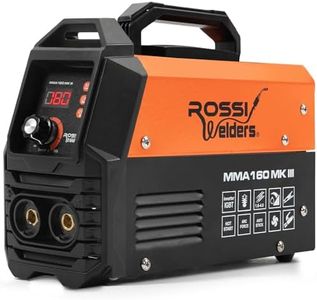We Use CookiesWe use cookies to enhance the security, performance,
functionality and for analytical and promotional activities. By continuing to browse this site you
are agreeing to our privacy policy
10 Best Stick Welders
From leading brands and best sellers available on the web.Buying Guide for the Best Stick Welders
Choosing the right stick welder is all about matching the machine’s features to the kind of work you’ll be doing. Think about the thickness of metal you want to weld, how often you plan to use the welder, and where you’ll be using it—like in your garage, a job site, or a workshop. It’s important to understand the basics so you can compare models confidently and select one that will be reliable and easy for you to use.Amperage RangeAmperage range refers to how much electrical current the welder can deliver. This is important because it tells you what thickness of metal you can weld; higher amps let you weld thicker material, while lower amps are better for thin metals. Light-duty DIYers might look at welders up to 140 amps, which are good for light repairs and thin metals. Mid-range options from 140-200 amps are more versatile for most home and farm needs. Pros or people working with heavy machinery might want 200 amps or more for industrial tasks. You should pick the amperage range based on the types and thicknesses of metal you expect to work with most often.
Input VoltageThe input voltage of a stick welder shows what kind of power sources it can plug into. Common options are 110/120V (standard home outlets) and 220/240V (heavier-duty power, often for garages or workshops). Lower voltages are ideal for general household repairs, while higher voltages are better for more demanding jobs or thicker metal. Some welders can handle both. Match the input voltage to your available power supply so you can use the welder wherever you plan to work.
Duty CycleDuty cycle is a measure of how long the welder can run in a 10-minute period before it needs to cool down. It’s shown as a percentage, like 30% at 100 amps, which means the welder can run 3 minutes out of every 10 before resting. For occasional or hobby use, a lower duty cycle is fine, but for longer or professional jobs, a higher duty cycle lets you work longer without stopping. Choose based on how much continuous welding you plan to do.
PortabilityPortability looks at how easy it is to move the welder. Some welders are lightweight and have handles, making them easy to carry around a home or job site. Heavier, bulkier models are built for stationary use. If you need to move your welder often—say, from your truck to a fence repair—lightweight and compact is best. If it stays in your workshop, a bigger model is less of an issue.
Electrode CompatibilityElectrode compatibility means the range of welding rods your welder can use. Different rods are designed for different jobs and metals. Basic hobby work may only need compatibility with common rods, while more advanced projects might use specialty electrodes. Check what types the welder supports and pick based on the projects you plan to tackle.
Arc Stability and Ease of UseArc stability means how smoothly the welder initiates and maintains the welding arc. Easier arc starting and stable arcs help beginners avoid frustration, leading to better-looking welds. Simpler machines are often easier for new users, while advanced controls might appeal to experienced welders. Think about your skill level—beginners will benefit from features that make starting and controlling the arc easier.
Build Quality and Safety FeaturesA well-built stick welder will last longer and withstand more abuse from daily use or transportation. Features like thermal overload protection, sturdy casing, and clear safety labels make the machine safer and easier to maintain. If you’ll be using your welder frequently or in tough environments, prioritize solid construction and built-in safety features.

